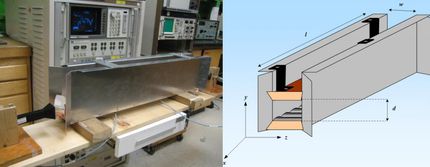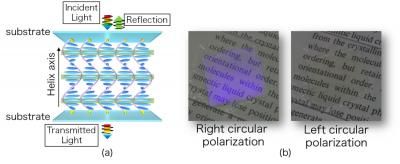Pushing the limits of lensless imaging
Using ultrafast beams of extreme ultraviolet light streaming at a 100,000 times a second, researchers from the Friedrich Schiller University Jena, Germany, have pushed the boundaries of a well-established imaging technique. Not only did they make the highest resolution images ever achieved with this method at a given wavelength, they also created images fast enough to be used in real time. Their new approach could be used to study everything from semiconductor chips to cancer cells.

In coherent diffraction imaging, extreme ultraviolet light scatters off the target and produces a diffraction pattern. A computer analyzes the pattern to reconstruct an image of the target material.
Dr. Michael Zürch, Friedrich Schiller University Jena, Germany
The researchers' wanted to improve on a lensless imaging technique called coherent diffraction imaging, which has been around since the 1980s. To take a picture with this method, scientists fire an X-ray or extreme ultraviolet laser at a target. The light scatters off, and some of those photons interfere with one another and find their way onto a detector, creating a diffraction pattern. By analyzing that pattern, a computer then reconstructs the path those photons must have taken, which generates an image of the target material -- all without the lens that's required in conventional microscopy.
"The computer does the imaging part - forget about the lens," explained Michael Zürch, Friedrich Schiller University Jena, Germany and lead researcher. "The computer emulates the lens."
Without a lens, the quality of the images primarily depends on the radiation source. Traditionally, researchers use big, powerful X-ray beams like the one at the SLAC National Accelerator Laboratory in Menlo Park, California, USA. Over the last ten years, researchers have developed smaller, cheaper machines that pump out coherent, laser-like beams in the laboratory setting. While those machines are convenient from the cost perspective, they have drawbacks when reporting results.
The table-top machines are unable to produce as many photons as the big expensive ones which limits their resolution. To achieve higher resolutions, the detector must be placed close to the target material -- similar to placing a specimen close to a microscope to boost the magnification. Given the geometry of such short distances, hardly any photons will bounce off the target at large enough angles to reach the detector. Without enough photons, the image quality is reduced.
Zürch and a team of researchers from Jena University used a special, custom-built ultrafast laser that fires extreme ultraviolet photons a hundred times faster than conventional table-top machines. With more photons, at a wavelength of 33 nanometers, the researchers were able to make an image with a resolution of 26 nanometers - almost the theoretical limit. "Nobody has achieved such a high resolution with respect to the wavelength in the extreme ultraviolet before," Zürch said.
The ultrafast laser also overcame another drawback of conventional table-top light sources: long exposure times. If researchers have to wait for images, they can't get real-time feedback on the systems they study. Thanks to the new high-speed light source, Zürch and his colleagues have reduced the exposure time to only about a second - fast enough for real-time imaging. When taking snapshots every second, the researchers reached a resolution below 80 nanometers.
The prospect of high-resolution and real-time imaging using such a relatively small setup could lead to all kinds of applications, Zürch said. Engineers can use this to hunt for tiny defects in semiconductor chips. Biologists can zoom in on the organelles that make up a cell. Eventually, he said, the researchers might be able to cut down on the exposure times even more and reach even higher resolution levels.
Other news from the department science

Get the chemical industry in your inbox
By submitting this form you agree that LUMITOS AG will send you the newsletter(s) selected above by email. Your data will not be passed on to third parties. Your data will be stored and processed in accordance with our data protection regulations. LUMITOS may contact you by email for the purpose of advertising or market and opinion surveys. You can revoke your consent at any time without giving reasons to LUMITOS AG, Ernst-Augustin-Str. 2, 12489 Berlin, Germany or by e-mail at revoke@lumitos.com with effect for the future. In addition, each email contains a link to unsubscribe from the corresponding newsletter.


























































